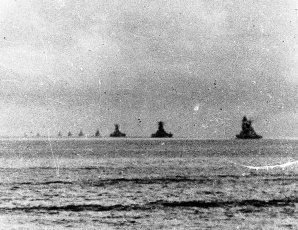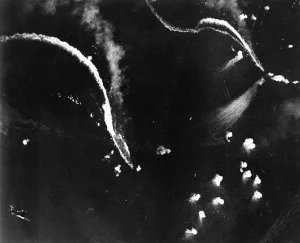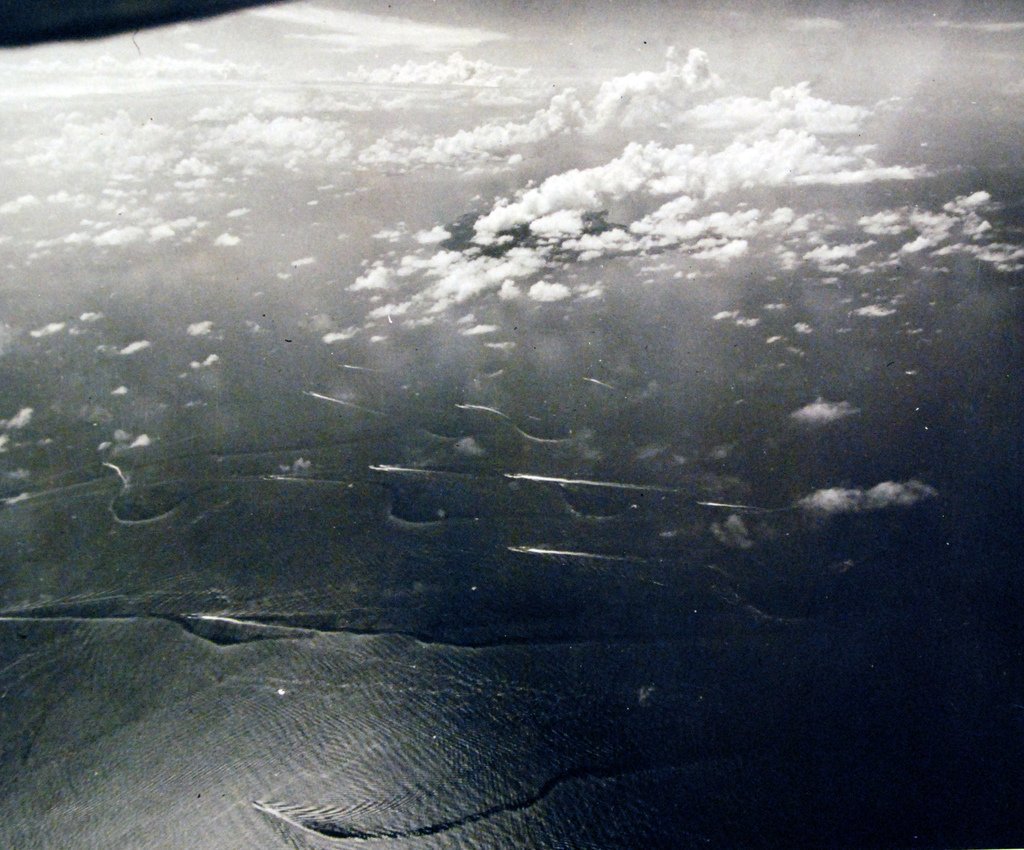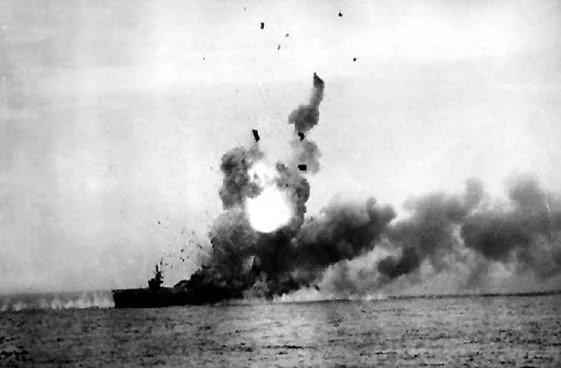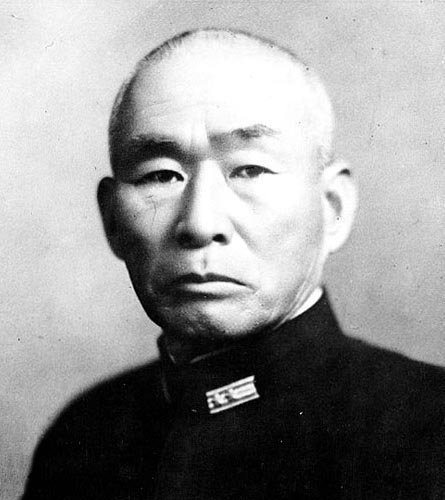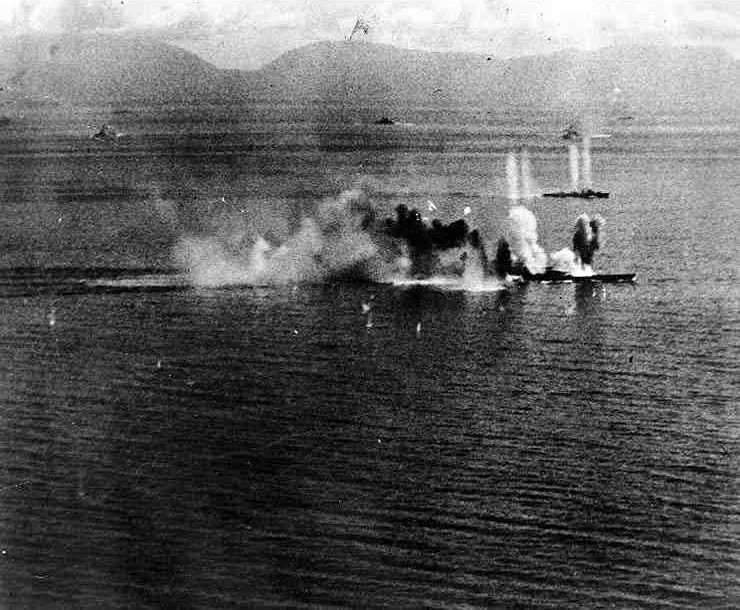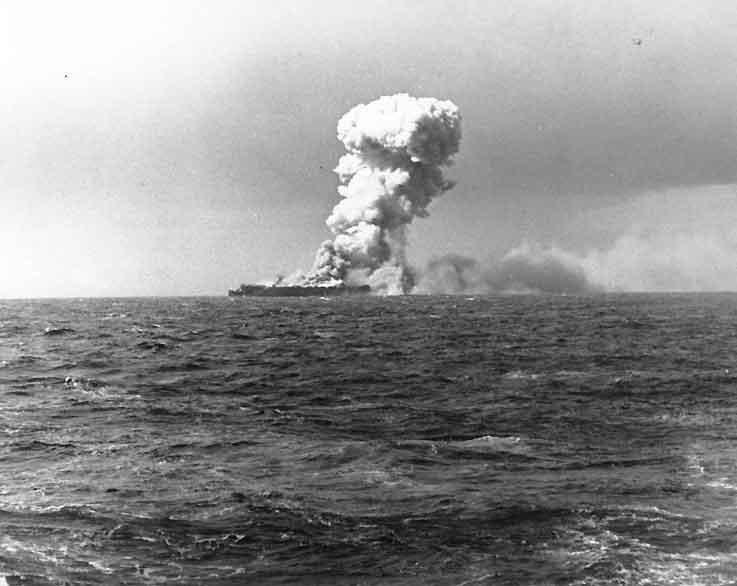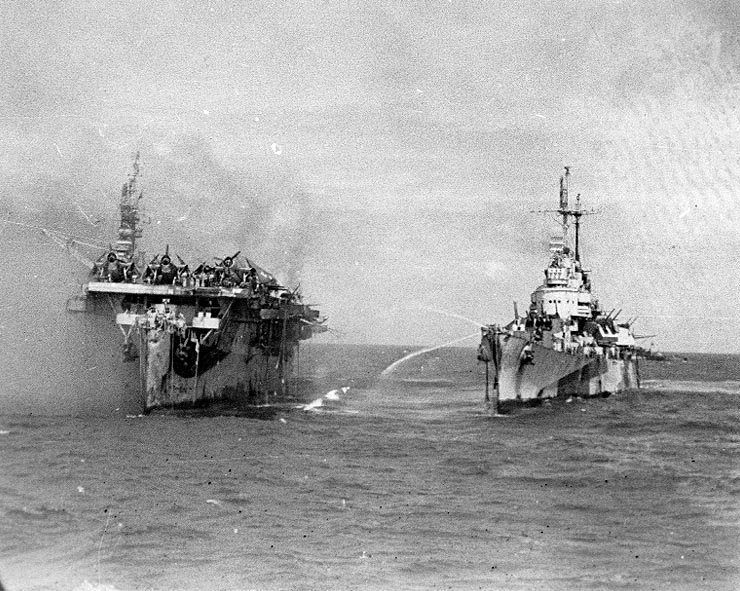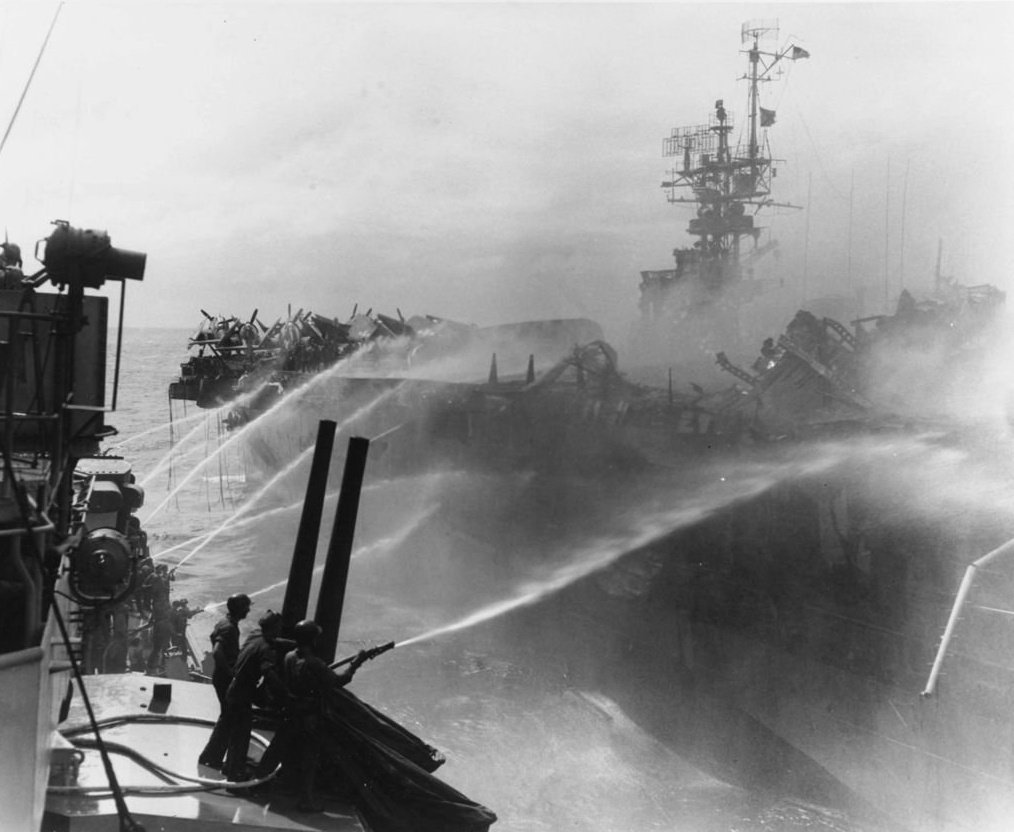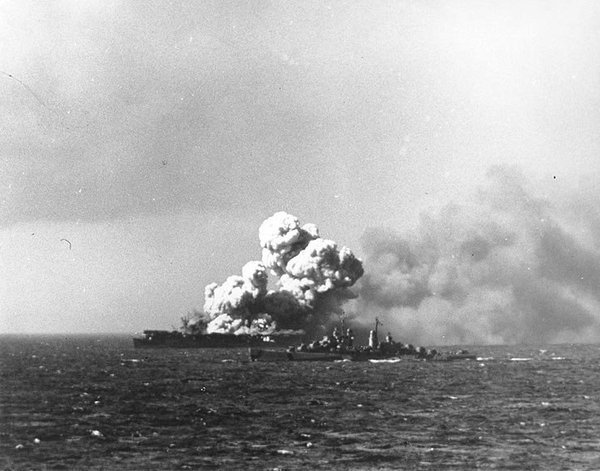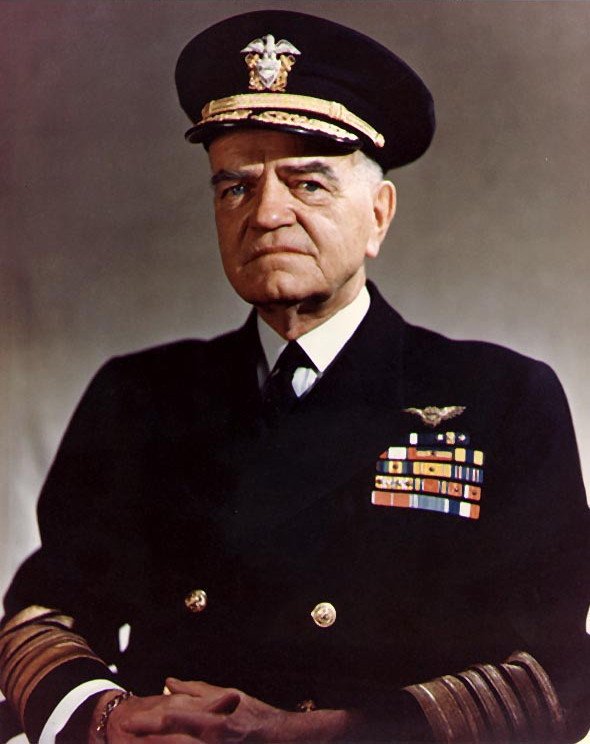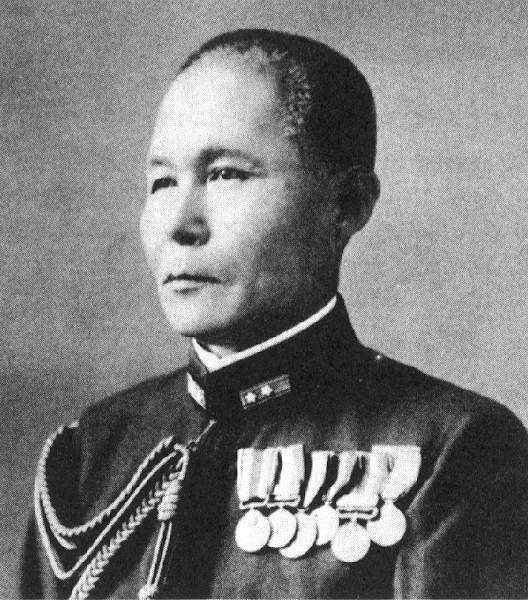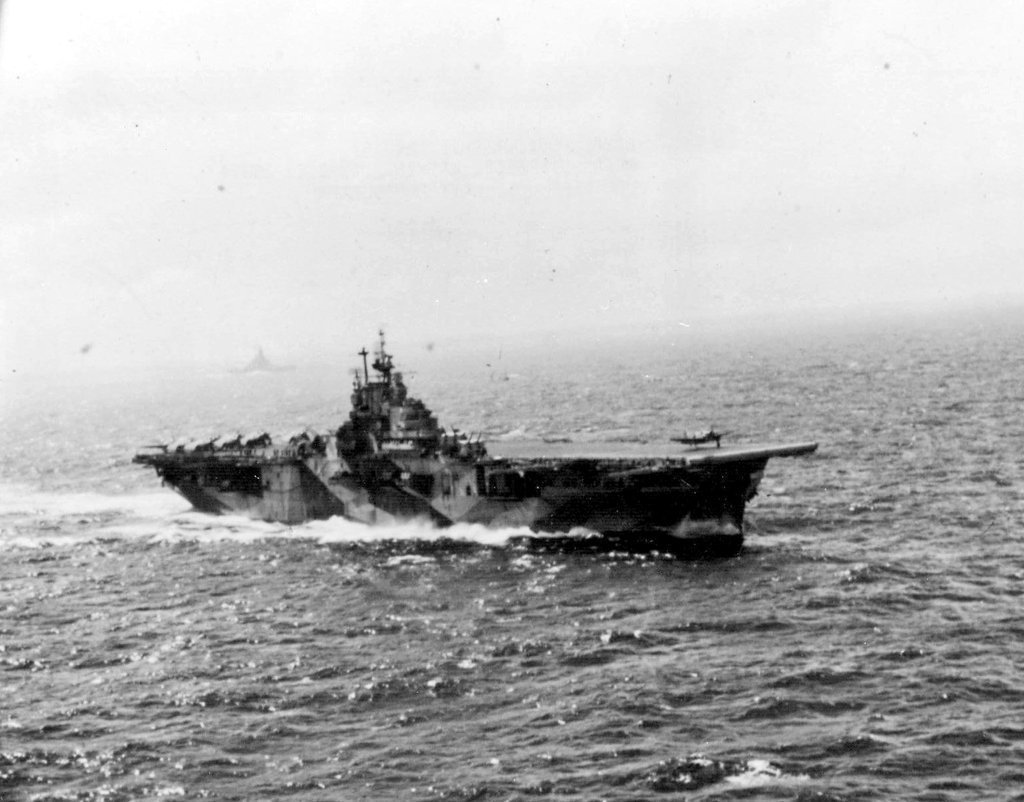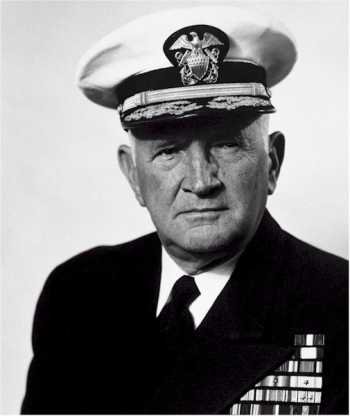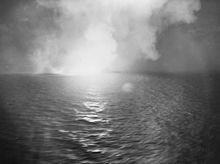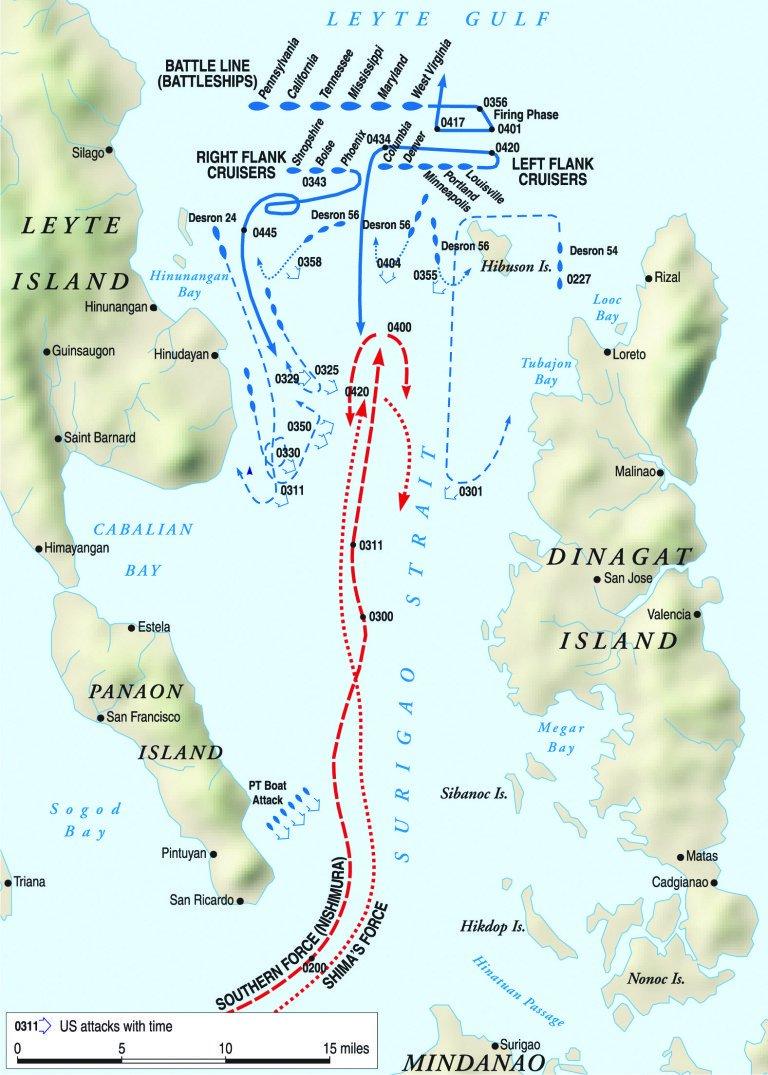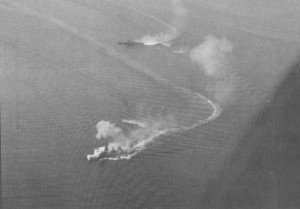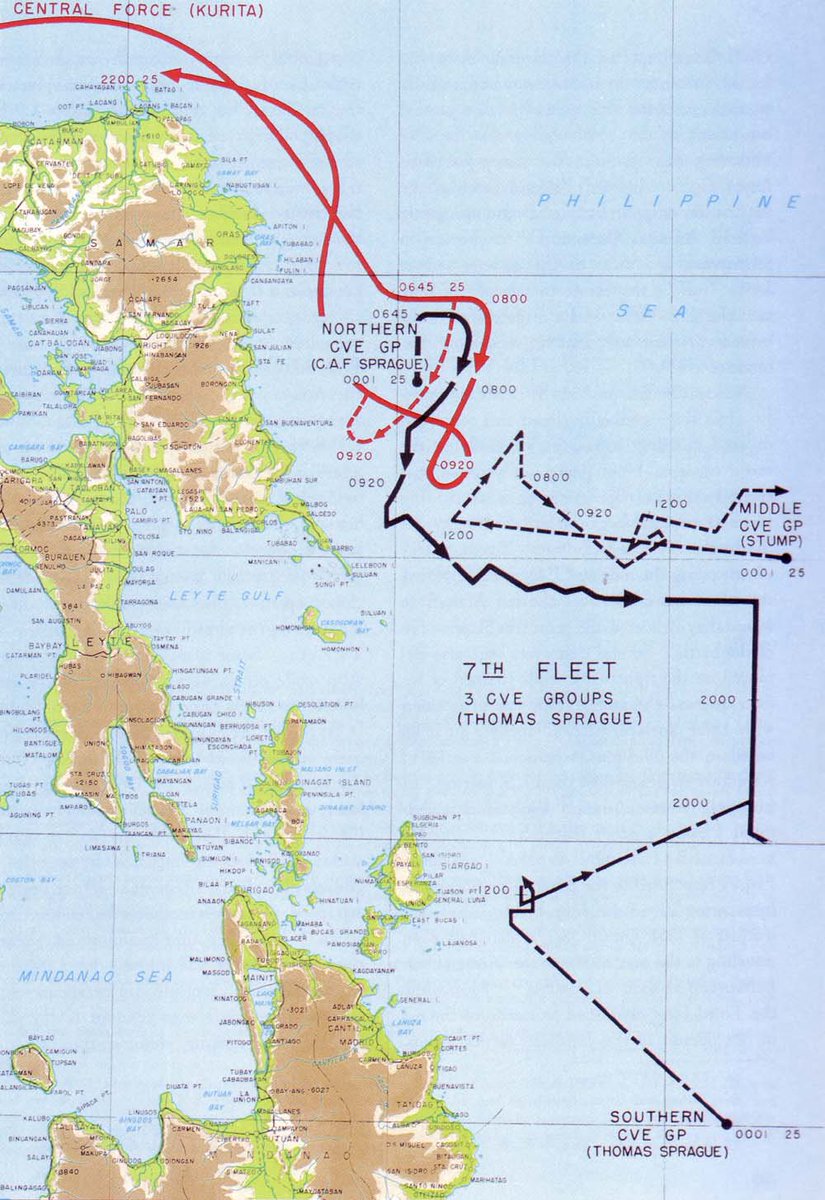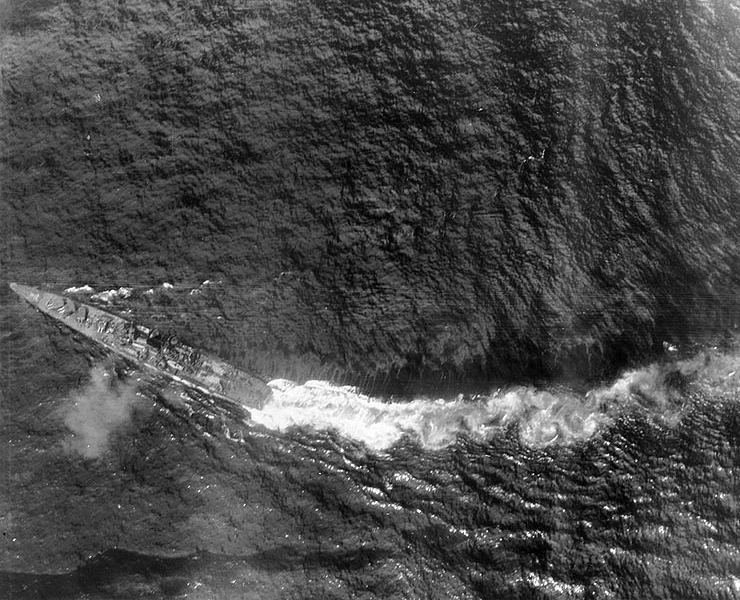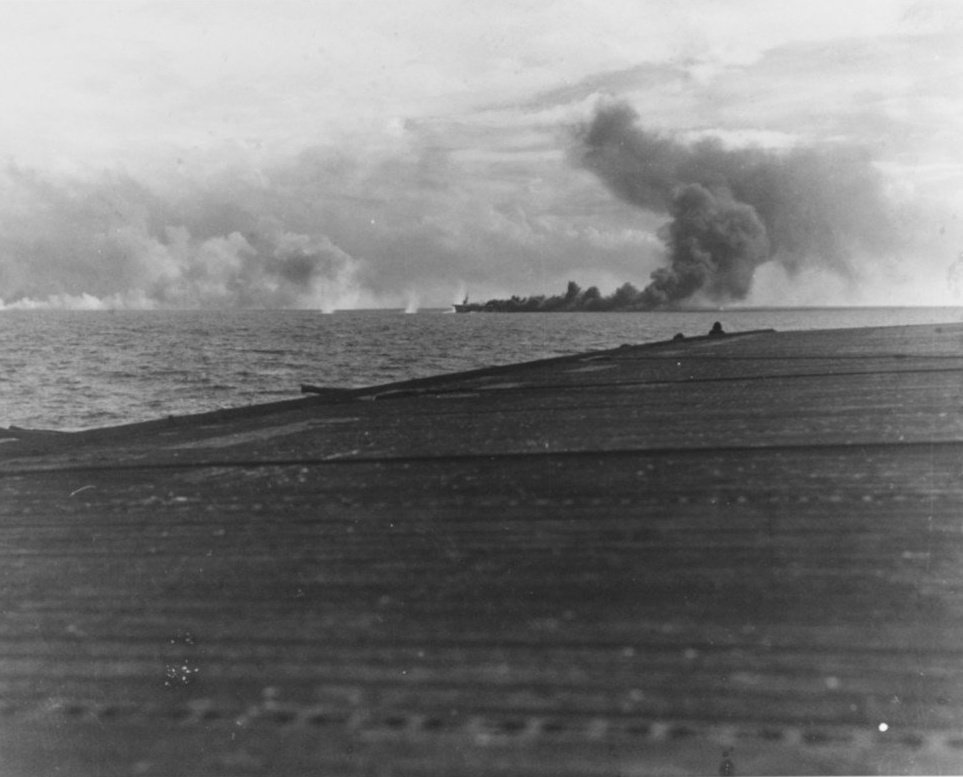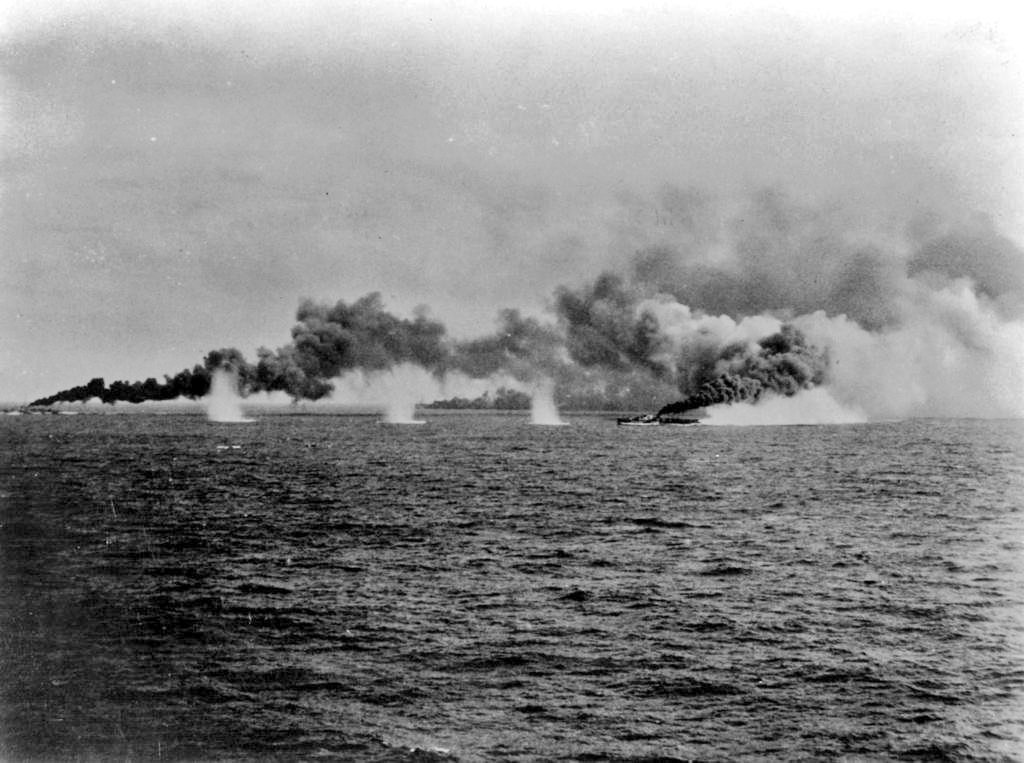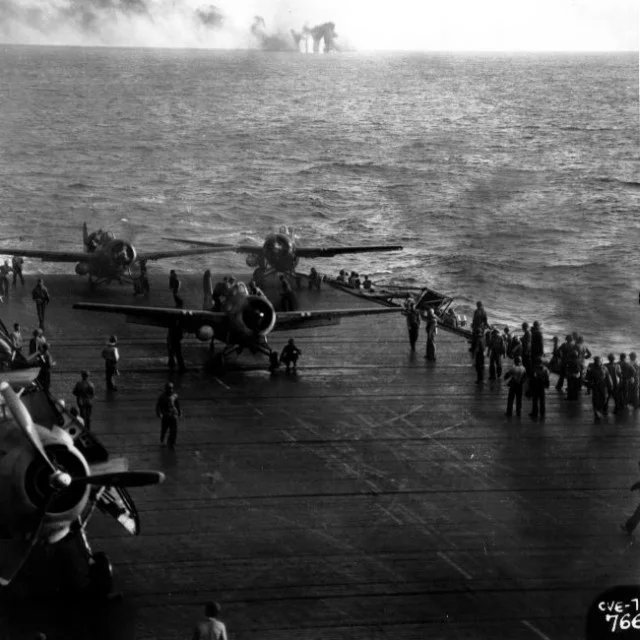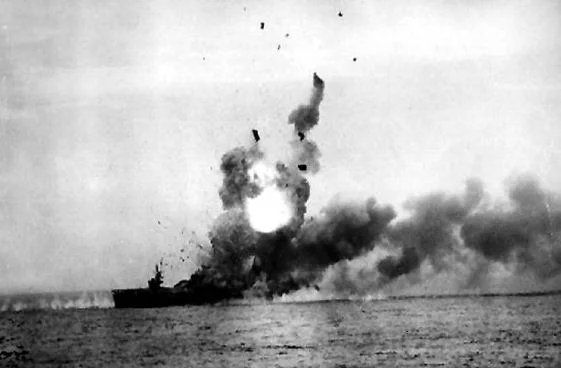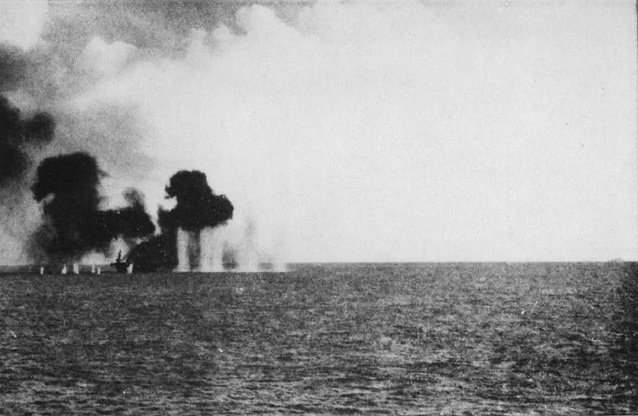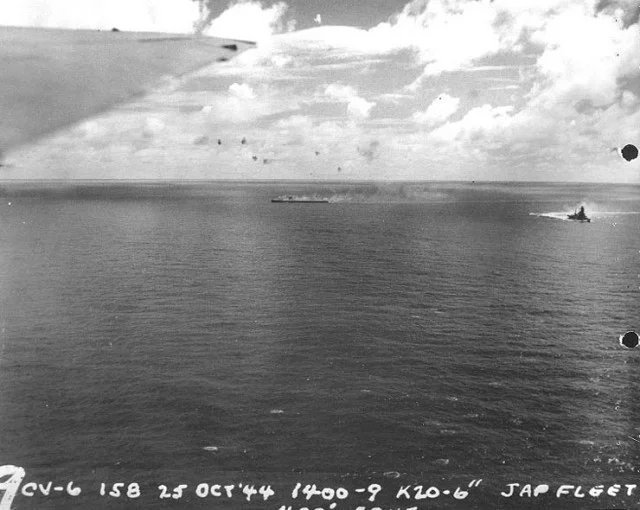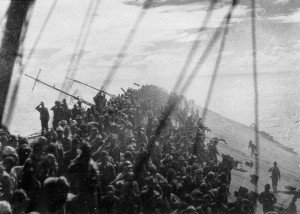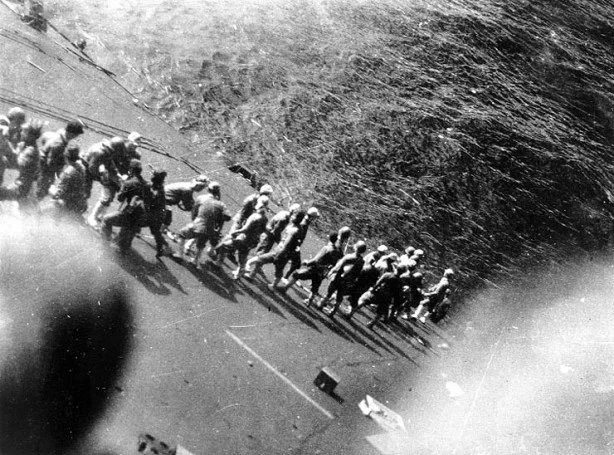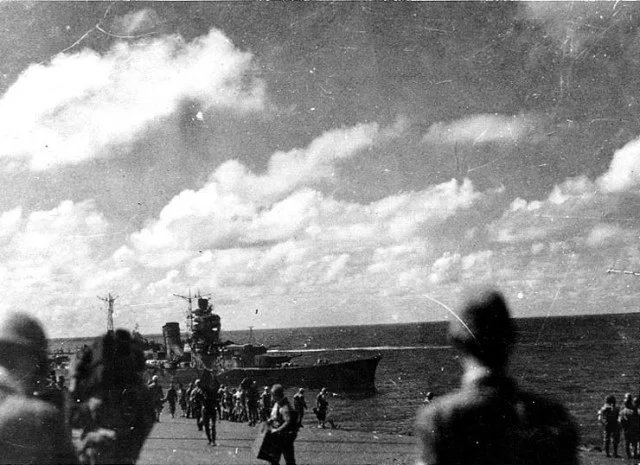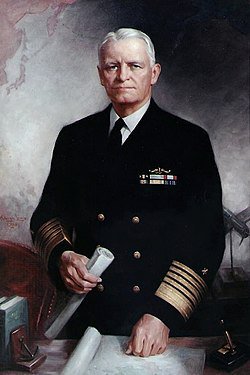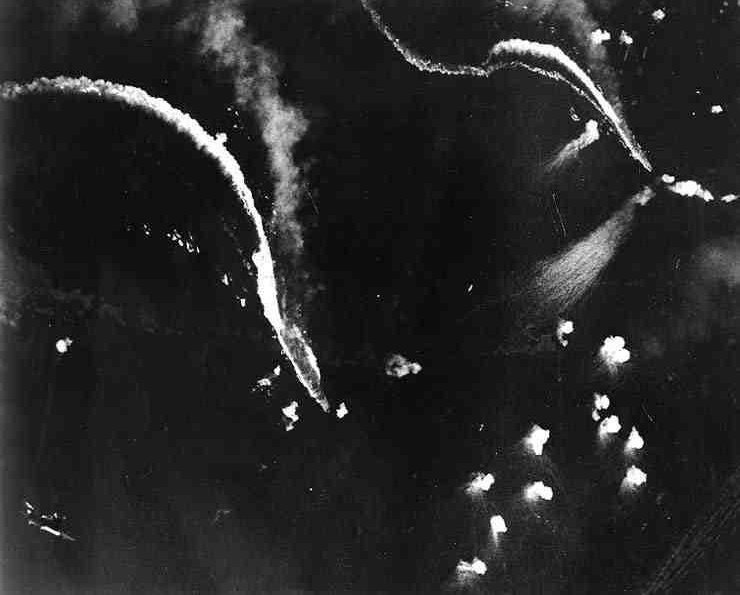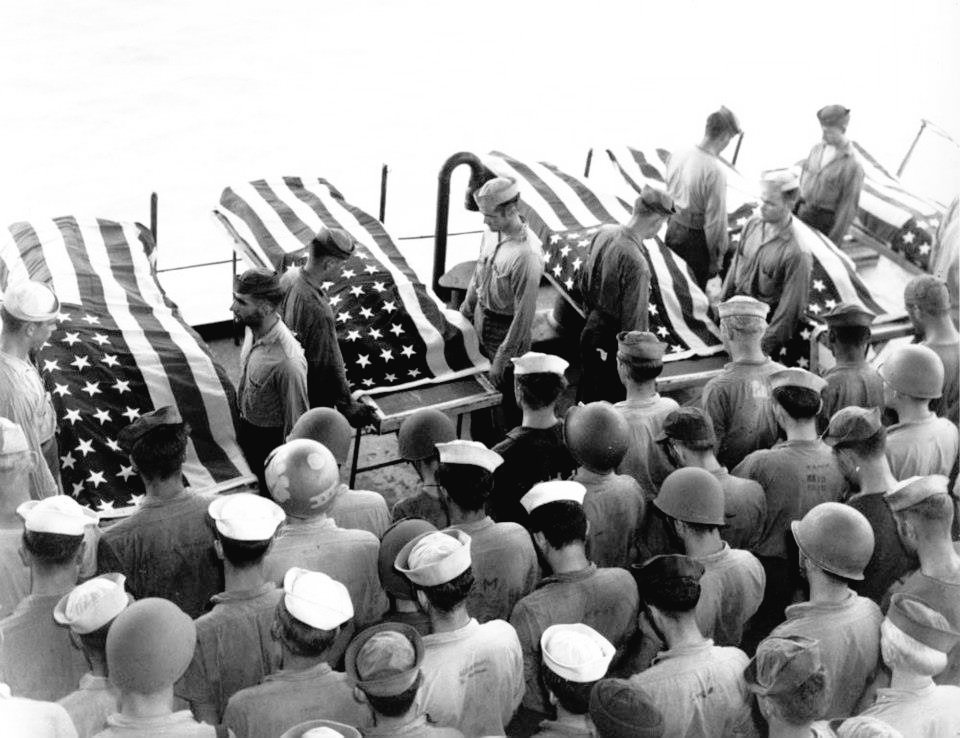Today in 1944, the U.S. Navy& #39;s Third and Seventh Fleets, along with ships from the Royal Australian Navy and Royal Navy, met the Imperial Japanese Navy at the Battle of Leyte Gulf, possibly the largest naval battle in history. Long (three day) thread.
The battle lasted for four days, and consisted of several separate engagements. Leyte Gulf was the final clash of dreadnought battleships; the last time one naval force "crossed the T" of another in combat; and the first time the Japanese organized kamikaze attacks.
The action opened at Palawan Passage, a US sub attack on VAdm Kurita& #39;s Centre Force. USS Darter + Dace sighted Centre Force, shadowed them through the night, and made an incredibly successful attack, sinking two heavy cruisers (Atago + Maya), and mission killing a third (Takao).
Today in 1944, the US Third Fleet engaged Kurita& #39;s Centre Force at the Battle of the Sibuyan Sea, flying 259 sorties, primarily by Hellcats, mainly directed at the great Japanese battleship Musashi, which finally sank after being pulverized by at least 17 bombs and 19 torpedoes.
During the battle, the light carrier USS Princeton was struck with a 250kg bomb, causing fires and explosions which the crew were unable to control. Princeton was the largest American ship lost at Leyte Gulf, and the only Independence class carrier sunk during the war.
Amid the American onslaught, Kurita& #39;s Centre Force turned back to the west, temporarily. That action, coupled with exaggerated reports of the success of Third Fleet& #39;s air strikes on Centre Force, convinced Admiral Halsey (Third Fleet) that Kurita& #39;s Force had been defeated.
VAdm Ozawa& #39;s Northern Force (decoy) were detected by American aircraft. Convinced that this Force was the main Japanese threat, Halsey transmitted: "Central Force heavily damaged according to strike reports. Am proceeding north with three groups to attack carrier forces at dawn."
Halsey& #39;s Third Fleet sailed north towards Ozawa& #39;s decoy force. Kurita& #39;s powerful Centre Force, with Yamato and three other battleships, now had unopposed access to the San Bernardino Strait, and the escort carriers of VAdm Kincaid& #39;s Seventh Fleet.
Today in 1944, the US Navy and the Imperial Japanese Navy fought the world& #39;s last dreadnought action at the Battle of Surigao Strait. RAdm Oldendorf& #39;s task group formed a battle line that "crossed the T" of the Japanese Southern Force, halting their advance.
Oldendorf& #39;s superior numbers, tactics, and fire control, utterly devastated Japan& #39;s Southern Force. Japan lost two battleships and three destroyers without seriously damaging a US or Australian ship. Five of the American battleships present had been damaged at Pearl Harbor.
Later that morning, Kurita& #39;s powerful Centre Force, containing 23 warships including Yamato, emerged from San Bernardino Strait. Kurita knew Southern Force had been routed during the night, but was unaware Northern Force had successfully lured away Halsey& #39;s Third Fleet.
The only American naval forces remaining in the area were three escort carrier groups (Taffy 1-3) which were configured for ground attack. Third Fleet had been their backstop at San Bernardino. Taffy 3 (6 escort carriers, 3 destroyers, 4 destroyer escorts) readied for action.
The Battle off Samar is one of the great battles in naval history. RAdm Sprague& #39;s Taffy 3 was totally outmatched by Centre Force, but the small American destroyers and destroyer escorts laid down an astonishingly aggressive defence of their escort carriers, and invasion forces.
The destroyer USS Johnston and destroyer escort USS Samuel B. Roberts were particularly ferocious in their attacks on the vastly superior Japanese fleet. The violence of Taffy 3& #39;s response convinced Kurita he was fighting a far more capable fleet, and he withdrew from battle.
In the north the final action of Leyte Gulf was unfolding, at the Battle off Cape Engano. Ozawa& #39;s decoy force consisted of four aircraft carriers with limited aircraft, two battleships, three light cruisers, and nine destroyers. Halsey& #39;s Third Fleet was vastly superior.
Third Fleet launched waves of air attacks on Northern Force; over 500 sorties. American combat air patrols easily destroyed their opponents, and wreaked havoc on the Japanese fleet. Ozawa& #39;s flagship, Zuikaku, was destroyed. The last surviving carrier that attacked Pearl Harbor.
Throughout the engagement, Halsey had received reports from Seventh Fleet for assistance. Finally, after Adm. Nimitz sent "where is rpt where is task force 34" from Pearl Harbor, Halsey divided his force and sent a task force south to assist Taffy 3.
Off Cape Engano, the Third Fleet continued to maul Ozawa& #39;s Northern Force. All four Japanese carriers were sunk, as were two destroyers, and a light cruiser.

 Read on Twitter
Read on Twitter